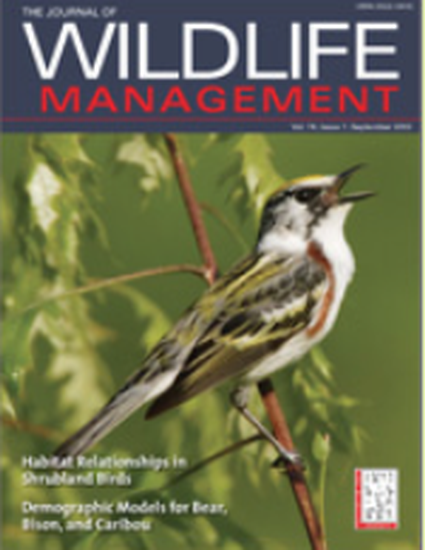
Article
Achieving Better Estimates of Greater Sage-Grouse Chick Survival in Utah
Journal of Wildlife Management
(2010)
Abstract
Declining sage-grouse (Centrocercus urophasianus) populations may be characterized by poor recruitment largely attributed to low chick survival. However, few published studies have explicitly examined factors that influence chick survival. We used a suture method to radiomark 1-2-day-old sage-grouse chicks (n = 150) in 2005-2006 on Parker Mountain in south-central Utah, USA, and monitored their survival to 42 days. We modeled effects of year, hatch date, chick age, brood-female age, brood-mixing, and arthropod abundance on chick survival. Our best model revealed an average survival estimate of 0.50 days to 42 days, which is the highest level ever documented for this longlived species. Brood-mixing occurred in 21% (31/146) of chicks and 43% (18/42) of broods we studied. Moreover, yearling females had more chicks leave their broods than did adults. We found that survival may be higher among chicks that switch broods compared to those that stayed with their natal mother until fledging. Thus, brood-mixing may be an adaptive strategy leading to increased sage-grouse chick survival and higher productivity, especially among chicks born to yearling females. Our findings also indicate that arthropod abundance may be an important driver of chick survival, particularly during the early brood-rearing period and, therefore, sage-grouse populations may benefit from a management strategy that attempts to increase arthropod abundance via brood habitat management.
Disciplines
Publication Date
2010
DOI
https://doi.org/10.1111/j.1937-2817.2010.tb01249.x
Citation Information
Terry A. Messmer. "Achieving Better Estimates of Greater Sage-Grouse Chick Survival in Utah" Journal of Wildlife Management Vol. 74 Iss. 6 (2010) p. 1286 - 1295 Available at: http://works.bepress.com/terry-messmer/232/
